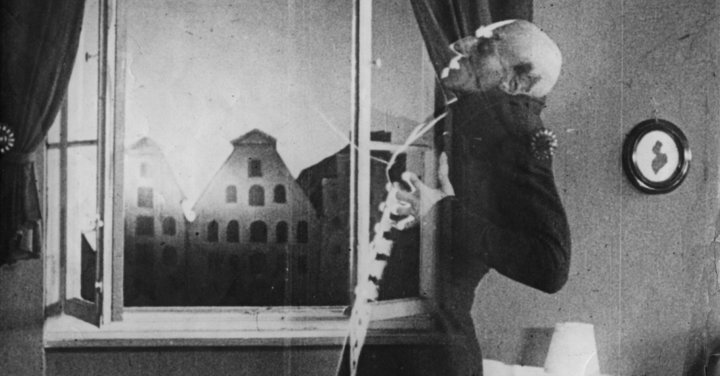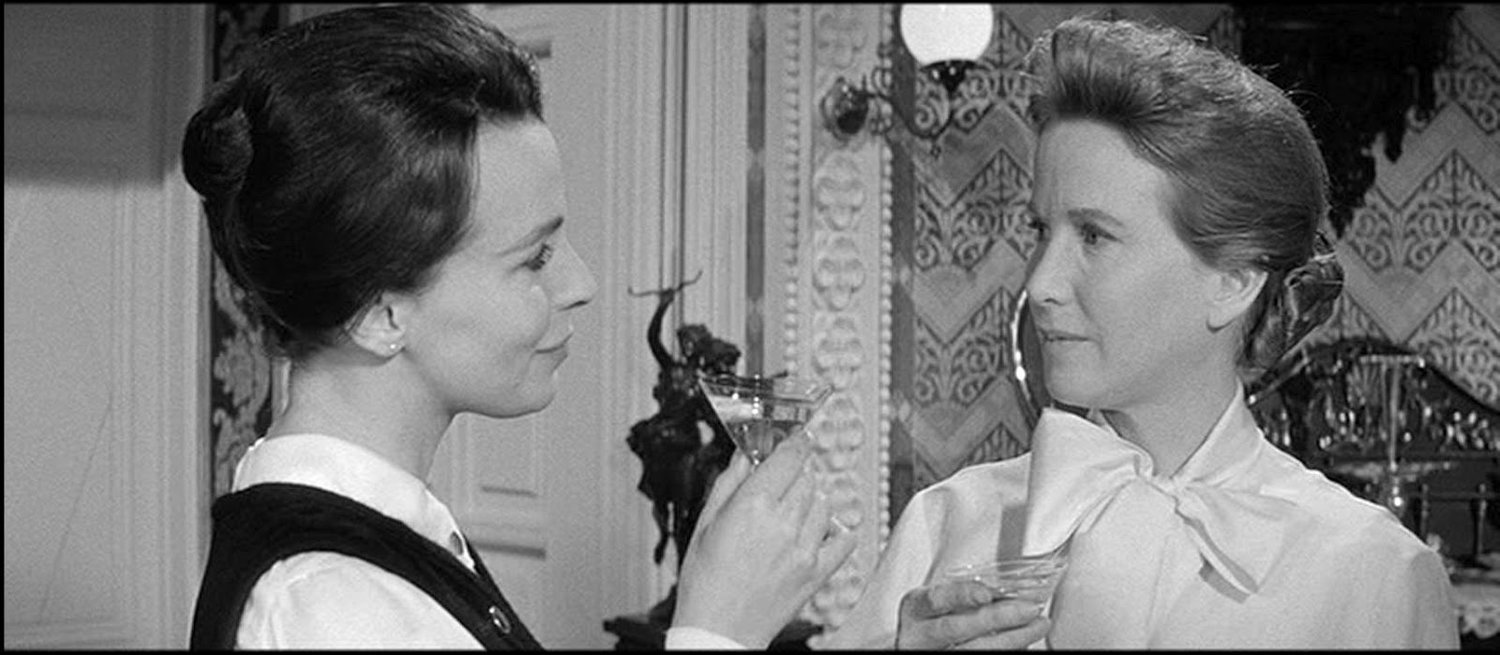Haunted: The intersections of queer culture and horror movies
October in Atlanta has arrived, and for many queers that is cause for one giant celebration: Gay Pride. While Pride festivities account for a long and debauchery-induced weekend in mid-October, for the strange and unusual (and I, myself, am strange and unusual) it stands for a month long dedication of all spook-worthy subjects to ascend to the surface. AKA Halloween, duh. While some people live the lifestyle year round, the month of October is when a muggle can muster the courage to be festive, particularly when it comes to viewing horror films. While the surface goal of the horror genre is to instill fear and suspense, one will be surprised to find there are many underlying political themes, especially when it comes to its vivid congruence to queer culture.
I can recall sitting in the den of my house in the suburbs of Cobb County the first time I viewed John Carpenter’s “Halloween” with my brother and his friend. I was about 8 years old. By the time the feature presentation was complete, the glow of the sunset was permeating the room with tangible beams of light. After the movie, I began a years-long habit of running past dark doorways and checking every corner of a bathroom before using it, in fear that someone would conveniently butcher me on the (s)pot. In other words, for the first time in response to a film, I was scared shitless. I thrived off the feeling of fear, enthralled by the tales of monsters and wayward souls living a life of dissonance and death. It’s not uncommon for a future queer, brown boy to feel like an outcast in rural Georgia, so naturally I was enveloped by the genre. In my later life, it came to be that I found a community with these like-minded individuals who also widely shared queer identities.
Articulating the skeleton-plot of a film in the genre isn’t necessarily difficult. You’ve got the unsuspecting group of innocents terrorized by a dark force, or monster, until goodness undoubtedly prevails. The trope of evil can vary between monster, demon, or mentally deranged individual. The thing these characters all have in common is the fear they instill in their victims solely based on their differences. So they may be a little different, possessed by the dark gods. That doesn’t mean they can’t be likable, right? As it goes, the antagonist of these stories is always given the plight of dealing with being other in a world of (hetero)normativity. Before the collapse of the Hollywood Production Code in 1968, which were moral guidelines as to what could be shown on screen, any kind of queer or same-sex representation was forbidden. It can be said that many directors from this era used their monsters as a metaphor for their own “perversions”. So begins the introduction into the world of villainous queers.
NOSFERATU
German Expressionist film “Nosferatu”, directed by F.W. Murnau, was one of the first and most iconic horror films. An adaptation of Bram Stoker’s “Dracula” (and later pronounced as a plagiarized version), it gave image to that unholy and infamous character we’ve all grown to love. What’s interesting to note, however, is that it was speculated that Stoker was a repressed homosexual due to his almost sexless marriage and his extreme adoration of his male cohorts such as Walt Whitman, Henry Irving, and Hall Caine. Count Dracula was speculated to be the manifestation of his repressed feelings. Furthermore, it’s intriguing that F.W. Murnau decided to create his own adaptation of the iconic novel in “Nosferatu”, as Murnau was an openly gay man. Could it be that he felt akin to Count Dracula’s supposed curse? That’s where we as queers can start to feel a bond.
While the Hollywood Production Code did collapse, that is not to say an influx of LGBTQ characters were inundating the big screen. Often times, if someone exhibited any sort of queer quality, they were imperviously killed off. Alternately, the queer of the situation often ended up being a suspect, if not the actual killer. We’re basically always fucked in the situation; however, that is nothing new to us so we still feel a connection with these characters and their demise. Vampires are an easy subject to make a comparison as they are always unusual in manner to heteronormativity. They’re often comfortable with both their masculine and feminine sides and exude a peculiarity that’s discomforting to the norm. Other monsters, especially if inhuman or deformed, can blame their misfortunes on their own decisions (i.e. being queer). But not all queers are stuck in the bad guys.
THE HAUNTING
In Robert Wise’s “The Haunting” (1963), there is some lesbionic undertones in the friendship between Nell and Theo. Nell is coy and sheltered, while Theo is flamboyant and unabashed. Their initial common connection as to why they are on the famed haunted hill house is their separate encounters with the paranormal. Nell experienced a poltergeist when she was younger and Theo has psychic abilities. As the film progresses, their friendship and bond becomes a strong one that many have speculated to go beyond just drinking tea with each other. Part of the theory is how Nell slowly starts to lose her mind. While there are obvious paranormal activities taking place in the home, she becomes paranoid of Theo and accuses her of being the cause for the evil. In a fit of anxiety and fear, Nell tries to escape the house in a car but meets her end in a crash against a tree. While not necessarily pitted as the root of the evil, watching this character development shows you how taboo it was to begin to understand your queerness. Nell was a simple and mild girl, while Theo was proud of her independence and rejection of needing a man. The way the picture is painted is that the impression Theo has on Nell is a fatal one. Coming from the boonies, I always felt like my friends’ parents thought I would do the same to their beloved children.
NIGHTMARE ON ELM STREET 2: FREDDY’S REVENGE
In the past, our narratives stayed in the shadowy dark places where mysteries brewed—but as time progressed, queers started becoming more outwardly prominent in films. “The Hunger” by Tony Scott flaunted the fluidity of sexuality as one of the central themes amongst the immortal characters. As stated before, vampires are often naturally queer, but this depiction truly exudes it without remorse. Adversely, there is the famed “Nightmare on Elm Street 2: Freddy’s Revenge” directed by Jack Sholder and written by David Chaskin. It is often revered as the gayest slasher film of all time. The film follows Jesse, played by then closeted gay actor Mark Patton, who recently moves into Nancy’s old house where Freddy Krueger first made his debut. Freddy visits Jesse in his dreams and begins to manipulate him into carrying out his deadly wishes. The story can be compared to that of Nell’s story in the Haunting discussed earlier. The more Freddy uses Jesse, the more repellant to hetero-normalcies Jesse grows. In one scene, he begins to kiss his love interest Lisa, but becomes so physically convulsed that he runs and escapes to his often shirtless best friend Grady. And in one of the most iconic scenes in which Freddy is taking over Jesse’s body, Jesse exclaims, “Something is trying to get inside my body!” It may not seem like much, but let’s remember it was the 80’s. Many years later, Chaskin admitted that he purposely integrated the subtextual homoeroticism. It was the height of the AIDS crisis and homophobia was rampant. He thought that putting those undertones into the film would have a ripple effect given his audience was mostly teen boys. Even though the queer nature wasn’t originally admitted, the film gave a very exploitative perspective.
OTTO OR UP WITH THE DEAD PEOPLE
In modern day, our epitome as evil and villainous has diminished (or so we’d like them to think). But really, it allows for much more outlandish concepts to take over. In 2008, “Otto or Up With the Dead People” directed by Bruce La Bruce premiered. The story revolves around Otto, a young neo-goth zombie, and his current identity crisis. He answers a casting call for an avant-garde tale about gay zombies called Up With the Dead People. As the filming continues, you start to see remnants of Otto’s past with his human ex-boyfriend. It’s a pretty wacky tale but for the first time delves more deeply into the mind of the supposed evil. Throughout the film, you start to recognize Otto’s dead condition as a reaction to his very recent depression concerning his boyfriend. It’s like a circle fully traveled in the evolution of film. While in earlier cinema, queerness was subversive and metaphorical, today we get to play with subject in much more outward ways.
While horror films are the inspiration behind the ghoulish, it extends itself to other areas of life. There’s an undeniable intersection between being queer, goth, and a fan of the dark side. So here’s to the most wonderful time of the year. Raise your goblet full of blood and cheers your queer siblings during the full moon!
----
Kenneth Figueroa is a queer Latinx, first generation Peruvian American living in Atlanta. Aside from being a hairstylist, he is also a founding member of "La Choloteca: Ley de Latinx" where he may very well show off his insatiable love for Kumbia queen Karla or lip sync for his life to Shakira."
Archive
- September 2025
- August 2025
- May 2025
- February 2025
- November 2024
- October 2024
- September 2024
- August 2024
- July 2024
- June 2024
- May 2024
- April 2024
- October 2023
- July 2023
- June 2023
- May 2023
- April 2023
- March 2023
- February 2023
- June 2022
- April 2022
- March 2022
- January 2022
- December 2021
- October 2021
- September 2021
- August 2021
- July 2021
- June 2021
- May 2021
- April 2021
- March 2021
- February 2021
- January 2021
- December 2020
- October 2020
- September 2020
- August 2020
- July 2020
- June 2020
- May 2020
- April 2020
- March 2020
- February 2020
- January 2020
- December 2019
- November 2019
- October 2019
- September 2019
- August 2019
- July 2019
- June 2019
- May 2019
- April 2019
- March 2019
- February 2019
- January 2019
- December 2018
- November 2018
- October 2018
- September 2018
- August 2018
- July 2018
- June 2018
- May 2018
- April 2018
- March 2018
- February 2018
- January 2018
- December 2017
- November 2017
- October 2017
- September 2017
- August 2017
- July 2017
- June 2017
- May 2017
- April 2017
- March 2017
- February 2017
- January 2017
- December 2015
- November 2015
- October 2015
- September 2015
- August 2015
- July 2015
- June 2015
- May 2015
- April 2015












